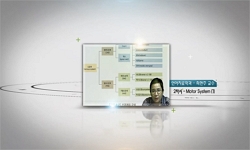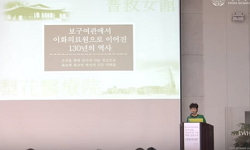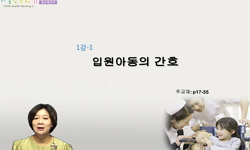The purpose of this study was to examine the effects of correcting sitting posture on the functional movements of upper-extremities for the children with cerebral palsy. The subjects of this study were 15 children age from 6 to 12 years old(age mean=9...
http://chineseinput.net/에서 pinyin(병음)방식으로 중국어를 변환할 수 있습니다.
변환된 중국어를 복사하여 사용하시면 됩니다.
- 中文 을 입력하시려면 zhongwen을 입력하시고 space를누르시면됩니다.
- 北京 을 입력하시려면 beijing을 입력하시고 space를 누르시면 됩니다.
앉기자세 교정이 뇌성마비 아동의 상지동작 수행에 미치는 효과 = Effects of Correcting Sitting Posture on the Functional Movements of Upper-Extremities for the Children with Cerebral Palsy
한글로보기https://www.riss.kr/link?id=A104809339
- 저자
- 발행기관
- 학술지명
- 권호사항
-
발행연도
2004
-
작성언어
Korean
- 주제어
-
자료형태
학술저널
- 발행기관 URL
-
수록면
1-21(21쪽)
-
KCI 피인용횟수
4
- 제공처
-
0
상세조회 -
0
다운로드
부가정보
다국어 초록 (Multilingual Abstract)
The purpose of this study was to examine the effects of correcting sitting posture on the functional movements of upper-extremities for the children with cerebral palsy. The subjects of this study were 15 children age from 6 to 12 years old(age mean=9.7, SD=1.9) with cerebral palsy in the special education school. The measurements were taken before and after correcting the sitting posture using soft belt restraint for the functional movement of upper extremities by the Box and Block Test We compared between the dominant hand and non-dominant hand, sex, age, and types of the children with cerebral palsy, Paired t-test was used for the data analysis.
The results of this study were as follows:
First, correcting sitting posture was effective on the functional movements of upper-extremities for the children with cerebral palsy.
Second, correcting sitting posture was effective on the functional movements of dominant hand, and there were no significant difference between the sex.
Third, the results showed the significant difference on all the functional movements in age group from 6 to 9 years old, but in age group from 10 to 12 years old the result showed the improvement
on only dominant hand's functional movement.
Fourth, spastic cerebral palsy was effective in the both hands and athetoid cerebral palsy was only effective in the dominant hand.
In conclusion, the correcting sitting posture was effective on the functional movements of upper-extremities for the children with cerebral palsy. Therefore, the correcting sitting posture using soft restraint belt can be used for improving the educational ability of children with cerebral palsy,
국문 초록 (Abstract)
이 연구에서는 뇌성마비 아동의 특성을 고려한 올바른 앉기자세 교정이 상지동작에 어떠한 영향을 주는지 알아보았고, 남녀, 연령층, 장애유형에 따라 어떠한 효과가 나타나는지 알아보았...
이 연구에서는 뇌성마비 아동의 특성을 고려한 올바른 앉기자세 교정이 상지동작에 어떠한 영향을 주는지 알아보았고, 남녀, 연령층, 장애유형에 따라 어떠한 효과가 나타나는지 알아보았다.
이 연구의 대상은 지체부자유 특수학교에 재학중인 뇌성마비아동 15명이었고, 독립보행이 되지 않지만 상지의 움직임이 가능하고, 연구자가 지시하는 내용을 이해하고 협조 가능한 아동이었다. 검사 도구는 상자와 나무토막 검사(Box and Block Test)를 사용하였고, 앉기 자세 교정 전, 후의 상지동작을 평가하였다. 우세 손과 비우세 손 각각의 효과가 뇌성마비 아동의 남녀, 연령층, 장애유형에 따라 어떻게 나타나는지 분석해 보았다. 수집된 자교를 바탕으로 대웅표본 t-test를 실시하여 통계적 검중을 하였다. 이 연구의 걸과는 다음과 같다.
첫째, 올바른 앉기 자세 교정은 뇌성마비 아동의 상지동작 향상에 효과적이었다.
둘째, 성별 자세 교정 효과는 우세손에서 있었고, 성별로 큰 차이는 보이지 않았다.
셋째, 연령층별 자세 교정 효과는 6세-9세의 연령층에서는 양손에서 있었고, 10세-12세의 연령층에서는 우세 손에 있어서만 효과가 있었다.
넷째, 장애유형별 자세 교정 효과를 보면 경직형은 양손 모두에서 효과가 있었고 무정위 운동형은 우세손에서만 효과가 있었다.
이상의 연구 결과들을 볼 때, 교육 현장에서 쉽게 간과할 수 있는 뇌성마비 아동의 자세를 올바르게 잡아주는 것이 상지동작 수행 향상에 효과적임을 알 수 있다. 따라서 앉기 자세 교정은 학업 수행 능력을 부여하고 어릴 때부터 조기 중재가 필요함이 나타났다.
동일학술지(권/호) 다른 논문
-
- 한국발달장애학회
- 김희경
- 2004
-
전래동요를 통한 연상학습이 정신지체아의 표현언어에 미치는 사례연구
- 한국발달장애학회
- 이유묘
- 2004
-
- 한국발달장애학회
- 전용호
- 2004
-
- 한국발달장애학회
- 이영철
- 2004
분석정보
인용정보 인용지수 설명보기
학술지 이력
| 연월일 | 이력구분 | 이력상세 | 등재구분 |
|---|---|---|---|
| 2023 | 평가예정 | 재인증평가 신청대상 (재인증) | |
| 2020-01-01 | 평가 | 등재학술지 선정 (재인증) |  |
| 2019-01-01 | 평가 | 등재후보학술지 유지 (계속평가) |  |
| 2018-01-01 | 평가 | 등재후보학술지 유지 (계속평가) |  |
| 2017-01-01 | 평가 | 등재후보학술지 유지 (계속평가) |  |
| 2016-01-01 | 평가 | 등재후보학술지 유지 (계속평가) |  |
| 2015-01-01 | 평가 | 등재후보학술지 유지 (계속평가) |  |
| 2013-01-01 | 평가 | 등재후보 1차 FAIL (등재후보1차) |  |
| 2012-01-01 | 평가 | 등재후보학술지 유지 (기타) |  |
| 2011-01-14 | 학술지명변경 | 한글명 : 발달장애학회지 -> 발달장애연구 |  |
| 2010-01-01 | 평가 | 등재후보학술지 선정 (신규평가) |  |
학술지 인용정보
| 기준연도 | WOS-KCI 통합IF(2년) | KCIF(2년) | KCIF(3년) |
|---|---|---|---|
| 2016 | 0.87 | 0.87 | 0.88 |
| KCIF(4년) | KCIF(5년) | 중심성지수(3년) | 즉시성지수 |
| 1 | 0.98 | 1.174 | 0.29 |




 스콜라
스콜라




